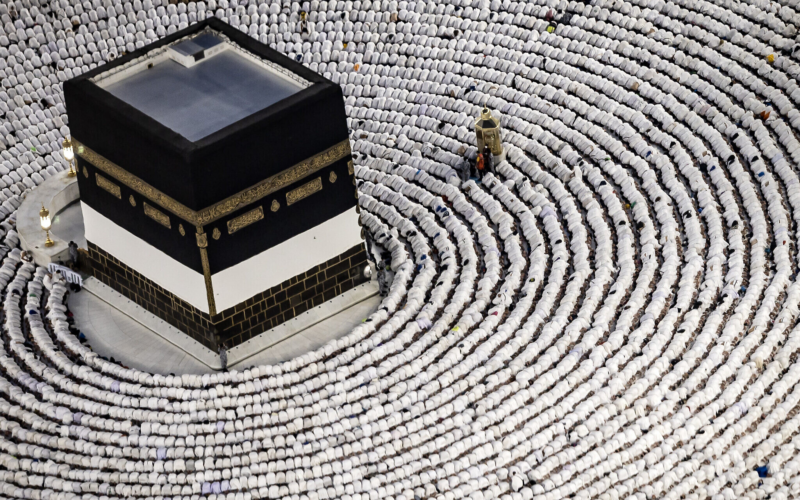Hundreds of pilgrims died during this year’s Hajj in Saudi Arabia as intense heat gripped the Islamic holy sites, officials reported on Wednesday. Families are now attempting to identify and claim the bodies of their loved ones in the aftermath of the pilgrimage.
This year’s Hajj, one of the largest annual gatherings in the world, faced extreme temperatures that soared to 47°C in Mecca and surrounding areas. The Saudi National Center for Meteorology reported that temperatures reached as high as 51.8°C at the Grand Mosque, though many pilgrims had already left for Mina by then.
The Hajj, a religious obligation for Muslims at least once in their lifetime if they are able, attracted over 1.83 million participants this year. Among them were over 1.6 million pilgrims from 22 countries and around 222,000 Saudi citizens and residents.
The Saudi authorities have not officially confirmed the death toll or the causes, but lines of anxious families were seen outside the Emergency Complex in Al-Muaisem, Mecca, trying to find missing relatives. An unofficial list circulating online suggested at least 550 deaths. According to a medical professional who spoke to The Associated Press on the condition of anonymity, approximately 600 bodies were at the facility. The identities of the deceased included nationals from Algeria, Egypt, and India.
In the chaotic scenes, an Egyptian man collapsed after learning his mother was among the dead. His anguished reaction underscored the emotional toll on families waiting for news about their relatives. Security was tight at the facility, and an official read out the names and nationalities of the deceased as families were let inside to identify the bodies.
Saudi Arabia has invested billions in crowd control and safety measures for the Hajj, yet the enormous influx of people makes managing such risks challenging. Climate change poses an additional threat; a 2019 study from the Massachusetts Institute of Technology warned that future Hajj pilgrimages could be held under temperatures surpassing the “extreme danger threshold.”
The kingdom has a history of deadly incidents during the Hajj. The deadliest occurred in 2015, when a stampede in Mina claimed over 2,400 lives, according to an Associated Press count. Saudi Arabia has not disclosed the official toll of that disaster. Other notable incidents include a crane collapse at Mecca’s Grand Mosque in 2015, which killed 111 people, and a 1990 stampede that resulted in 1,426 deaths.
The Hajj follows a lunar calendar, causing the pilgrimage to shift about 11 days earlier each year. By 2030, it will take place in April, with subsequent years moving into the winter months when temperatures are milder, potentially reducing the risk posed by extreme heat.
Despite the tragic losses, the Hajj remains a fundamental pillar of Islam, with millions of Muslims continuing to aspire to complete this pilgrimage. Saudi Arabia’s ruling Al Saud family, which oversees the holy sites and has invested heavily in infrastructure to support pilgrims, continues to play a critical role in managing the annual event.
As climate change and the challenges of managing large crowds continue to impact the Hajj, Saudi Arabia will need to adapt its safety measures to protect future pilgrims.








